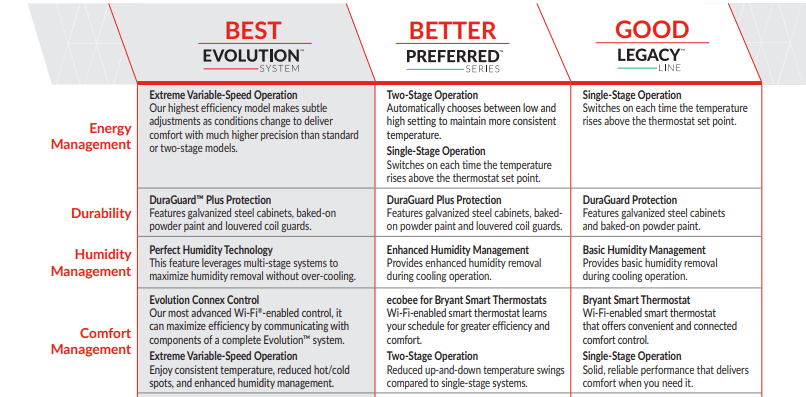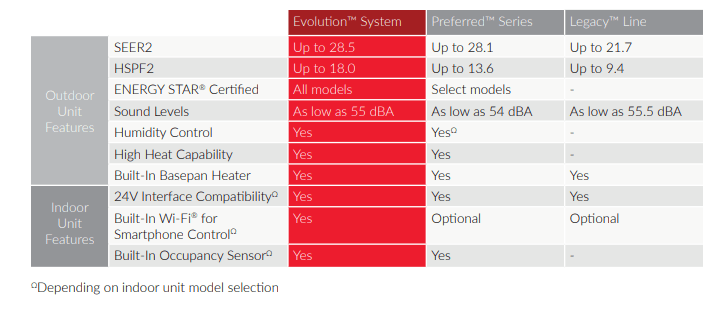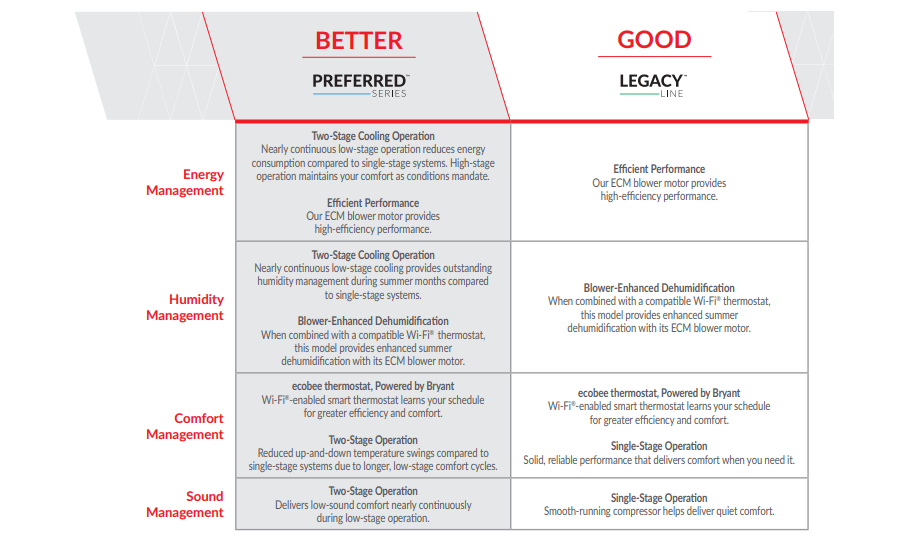Your Guide To Understanding Air Conditioning Systems
Air conditioning systems are essential for creating a comfortable living environment, especially during hot summer months. In this guide, we provide valuable insights into air conditioning systems, helping you understand their functionality, choose the right system, and ensure proper installation and maintenance.

How Air Conditioning Systems Work
Air conditioning systems work by using a refrigeration cycle to cool indoor air. The basic process involves four key components: the compressor, condenser, expansion valve, and evaporator coil.
The process starts with the compressor, located in the outdoor unit. It compresses refrigerant gas, raising its pressure and temperature, and pumps it into the condenser. As the high-pressure refrigerant gas enters the condenser (also in the outdoor unit), it cools down by releasing heat to the outside air, causing the refrigerant to condense into a high-pressure liquid. The refrigerant then travels to the expansion valve, which reduces the pressure, causing the liquid refrigerant to evaporate into a cold, low-pressure gas.
The cold refrigerant gas flows through the evaporator coil inside the indoor unit. As warm air from the room blows over the coil, the refrigerant absorbs heat from the air, cooling it down. This cool air is then circulated back into the room by a blower fan.
The refrigerant, now warmed up after absorbing heat from the indoor air, returns to the compressor to begin the cycle again. Throughout this process, the air conditioner continually removes heat from the indoor environment and expels it outdoors, lowering the indoor temperature. The system also dehumidifies the air by removing moisture during the cooling process, creating a more comfortable living space.
Benefits of Installing An Air Conditioning System
Air conditioning systems offer several key benefits, making them essential for maintaining a comfortable and healthy indoor environment.
Temperature Control
One of the primary advantages is temperature control. AC units allow homeowners to regulate indoor temperatures, ensuring a consistent and comfortable atmosphere, especially during extreme heat. This is particularly important for areas with high summer temperatures or regions with humidity, as air conditioning can cool and dehumidify simultaneously.
Improved Air Quality
Another benefit is improved air quality. Air filters play a crucial role in improving the overall air quality in your home. As part of your air conditioning system, air filters capture and remove dust, pollen, pet dander, and other airborne particles that can negatively impact indoor air quality.
In addition to air filters, Bryant offers features that contribute to better indoor air circulation. These include variable-speed motors and multi-stage compressors that optimize airflow throughout your home. By ensuring consistent and balanced airflow, these features help prevent stagnant air and improve overall comfort.
Humidity control is another important aspect of indoor air quality. Excessive humidity can lead to discomfort, mold growth, and increased allergens. Bryant's Evolution ™ Series air conditioning systems are equipped with advanced humidity control features that help regulate and maintain optimal humidity levels in your home. By controlling humidity, Bryant's Evolution™ Series systems contribute to a healthier and more comfortable living space.
With Bryant's advanced air conditioning systems, you can enjoy enhanced air circulation, providing a more refreshing and comfortable indoor environment.
Protect Electronics and Appliances
Lastly, air conditioning can protect electronics and appliances from heat damage. Excessive heat can cause wear and tear on sensitive equipment, and air conditioning helps regulate the temperature, extending the lifespan of devices like computers, TVs, and kitchen appliances.
Different types of air conditioning systems
Various air conditioning systems are available, each suited for different needs.
Central Air Conditioning Systems
This is the most common system for cooling entire homes. Central AC consists of an outdoor unit (AC or heat pump) and an indoor unit (fan coil or evaporator coil and furnace). It uses a system of ducts to distribute cooled air throughout the home. Central AC is efficient, providing even cooling in every room, and is ideal for larger spaces or multi-room environments. Learn more about what is central air conditioning.

Ductless Mini Split Systems
Ductless mini split systems are ideal for homes without ductwork or for room-specific cooling. These systems have an outdoor compressor and multiple indoor air-handling units that cool individual rooms or zones. They are highly energy-efficient, as they allow users to cool specific areas without cooling the entire home. These systems also provide heating, making them versatile for year-round comfort. Learn more about what is a mini split.

Packaged Systems
Packaged products refer to complete, self-contained units that combine heating and cooling functions in one system. These systems are typically used on residential properties where space is limited, and there’s a need for a more compact solution. These systems combine all components (compressor, condenser, evaporator, and blower) in one unit, which is typically placed outside the home. They provide both cooling and sometimes heating, and the air is distributed through ducts.

Connect With A Bryant Dealer To Find The AC System Right For you
At Bryant, we offer a wide range of air conditioning systems that are designed to meet your specific needs. Our systems are known for their reliability, energy efficiency, and advanced features. By choosing a Bryant air conditioning system, you ensure optimal comfort and peace of mind. Schedule an appointment with your local Bryant dealer today to find the AC system right for you.
Learn More About Air Conditioners
- Explore Bryant air conditioners
- Learn about types of air conditioners and how does air conditioning work
- Get in the know on air conditioning service
- Find out what is a split AC unit and an inverter air conditioner
- Explore AC installation and AC replacement
- Learn the ins and outs of a central air conditioner
- Understand AC maintenance and AC tune ups
- Discover the factors in choosing the best air conditioner and what size air conditioner you need
- Explore wall AC and garage AC unit options
- Understand the definition of SEER2, EER2, and BTU
- Read our guides to AC parts
- Get help with an AC not working, mold in air conditioner, AC leaking water, AC smells, or AC not blowing cold air
- Explore the ins and outs of AC capacitors and AC drain lines
- Learn about AC refrigerant, including R-22 refrigerant, R-410A refrigerant and R-454B refrigerant
- Find out how long do AC units last?
- Learn how to clean AC coils , how to clean air conditioners, and how to perform air filter replacement
- Discover the difference in a heat pump vs air conditioner
- Find out what temperature to set air conditioner in summer


